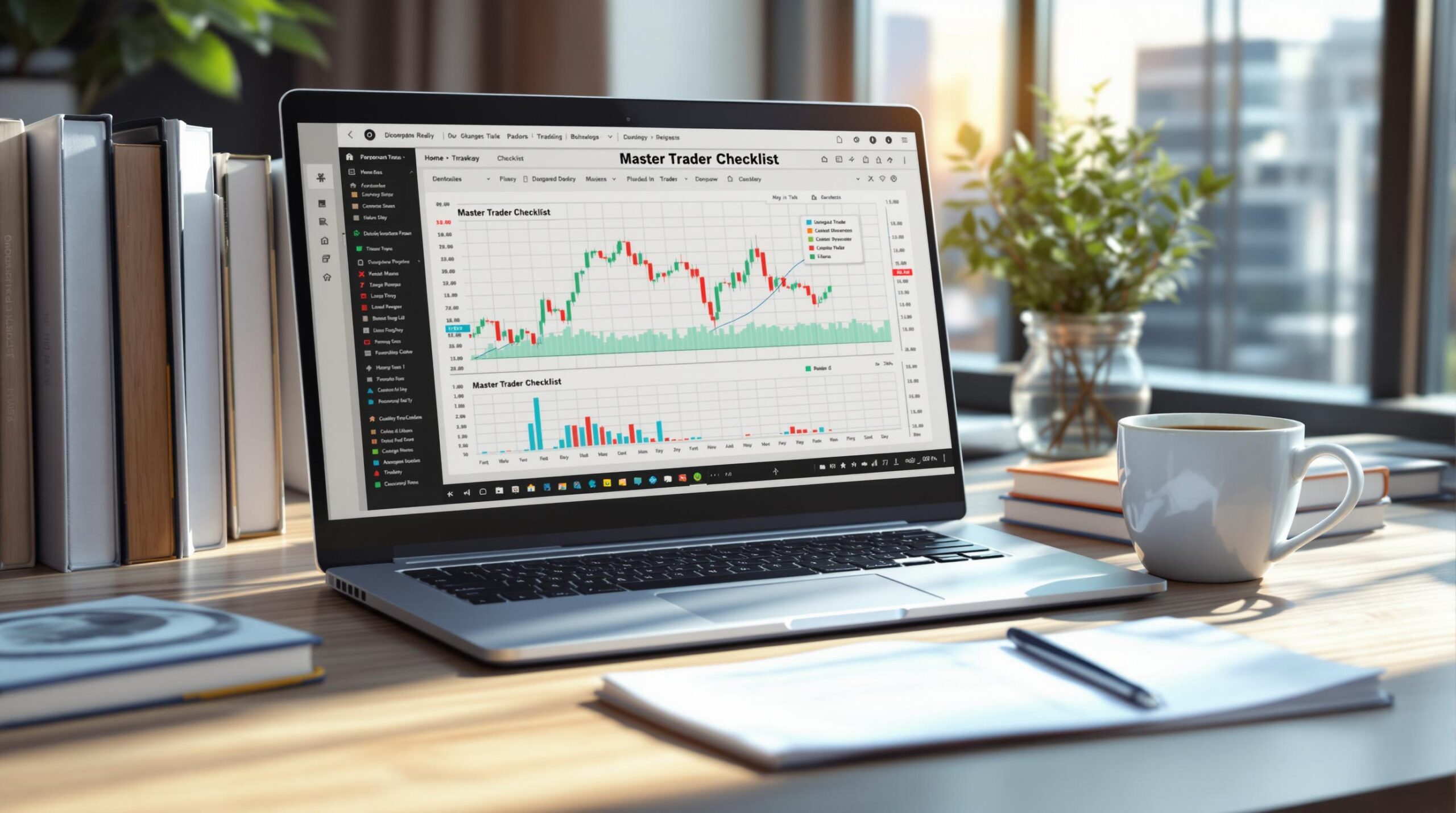
Want to succeed in copy trading? It starts with managing risk effectively. Here’s a quick guide to protect your investments and maximize returns:
- Diversify Your Portfolio: Spread investments across multiple traders, asset classes, and strategies to reduce reliance on any one source.
- Use Stop-Loss Orders: Set account-level and trade-specific stop-loss limits to cap potential losses.
- Choose Traders Wisely: Evaluate traders based on profit consistency, drawdowns, and risk-adjusted returns.
- Monitor Performance Regularly: Review key metrics like drawdowns and win rates weekly or monthly to stay aligned with your goals.
- Leverage Platform Tools: Use features like copy ratios, alerts, and built-in risk assessments for better control.
Risk Management In Forex: A 3-Step Approach for Traders
Diversifying Your Copy Trading Investments
Here’s how you can spread your investments across traders, strategies, and markets to reduce risk.
Spreading Investments Across Multiple Traders
Putting all your funds behind one trader can be risky. Instead, try spreading your investments across 3-4 traders with different trading styles. This way, if one trader underperforms, your entire portfolio won’t take a hit. Make sure each trader’s approach fits your personal risk preferences [1][3].
Balancing Different Asset Classes and Strategies
A good copy trading portfolio includes a mix of asset types and strategies. This helps balance risk and returns. Here’s an example of how you might allocate your portfolio:
- Stocks (30-40%): Focus on value or growth strategies.
- Forex (25-35%): Rely on technical analysis.
- Crypto (15-25%): Use momentum-based trading.
- Commodities (10-20%): Base decisions on fundamental analysis.
This kind of mix ensures you’re not overly reliant on a single market or approach.
Using Correlation Analysis for Diversification
Correlation analysis helps you avoid putting all your eggs in one basket. By checking how traders’ performances relate to each other, you can ensure your portfolio is genuinely diversified. Look for traders whose performance is either weakly related or negatively correlated. This means if one trader incurs losses, others might remain steady or even gain, balancing your returns.
To apply correlation analysis:
- Study traders’ past performance patterns.
- Compare their results during both bull and bear markets.
- Evaluate how their strategies perform during volatile periods.
This method helps you build a resilient portfolio and sets the stage for using precise stop-loss strategies, which we’ll dive into next.
Using Stop-Loss Orders Effectively
Stop-loss orders act as automatic safety measures for your copy trading investments. They work hand-in-hand with your strategy to spread out risk.
Setting Stop-Loss at the Account Level
You can set an equity stop-loss at the account level to match your personal risk tolerance. For instance, if your account balance is $10,000, setting a stop-loss at $9,000 ensures that all copying activities will stop, and positions will close if your equity falls to that level. This limits your potential loss to $1,000 [1].
When setting this threshold, consider factors like:
- How much risk you’re comfortable taking
- The total amount you’ve invested
- Current market conditions
- The complexity of your trading strategy
Setting Stop-Loss for Individual Trades
Stop-loss orders for individual trades allow for more precise risk control. These should be adjusted based on the specifics of each trade, including market trends and how volatile the asset is. A common method is to set the stop-loss at 5% below the entry price for standard trades [2].
- For short-term trades, tighter stops (2–5%) are often better.
- Swing trades may require moderate stops (5–10%).
- Long-term positions might need wider stops (10–15%).
Adjusting Stop-Loss Based on Market Conditions
Market conditions change, and your stop-loss settings should too. Tighten them during periods of high volatility to guard against sudden drops. In calmer markets, you can afford to set them wider to avoid closing positions too early [4].
Make it a habit to review your stop-loss settings weekly or monthly. This approach helps you stay flexible, which is a key part of managing a diversified portfolio.
Once you’ve fine-tuned your stop-loss parameters, you can focus on choosing traders whose strategies align with your risk management goals.
sbb-itb-c34bd9b
Choosing Master Traders Wisely
To build a solid foundation for your investments, it’s important to choose traders whose strategies align with your risk tolerance and financial goals. This goes hand-in-hand with setting proper stop-loss measures.
Key Performance Metrics for Traders
When evaluating traders, focus on these three key metrics:
- Profit consistency: Look for traders who achieve steady monthly gains (e.g., 8-10%) rather than those with unpredictable spikes like 30%.
- Maximum drawdown: Aim for traders with losses capped at less than 20%.
- Trade frequency: Strike a balance between traders who avoid overtrading and those who are too inactive.
Analyzing Risk-Adjusted Returns
Risk-adjusted returns are a critical factor. Look for traders with a Sharpe ratio above 1.5, as this indicates a strong balance between returns and risk. Additionally, prioritize traders with high Sortino ratios, which focus on minimizing downside risks [3].
Reviewing Past Performance and Strategy
Take a closer look at these historical factors when assessing traders:
- Consistency across markets: Choose traders who have maintained reliable performance through different market conditions. For instance, traders who navigated both the volatility of 2022 and the recovery period effectively are worth considering.
- Risk management: Pay attention to how traders handle position sizes and protective measures to safeguard investments.
- Transparency in strategy: Favor traders who clearly explain their methods and approach, ensuring you understand their decision-making process.
Once you’ve identified traders that meet these criteria, use platform tools to fine-tune your risk management strategy further.
Utilizing Risk Management Tools on Copy Trading Platforms
Tools for Assessing Risk on Platforms
Copy trading platforms often include built-in tools to help assess risk, using numerical scores based on a trader’s historical performance and trading behavior. These automated features are most effective when paired with strategies like diversification and stop-loss settings, as mentioned earlier.
For example, platforms such as Bybit offer features like Perp Copy Stop Loss (PCSL), which automatically stops copying a trader once losses hit a preset limit [2].
Setting Copy Ratios and Investment Limits
In addition to stop-loss settings, copy ratios allow you to adjust your exposure to individual traders. These ratios align with your overall account-level stop-loss configurations:
| Ratio | Risk Impact | Best For |
|---|---|---|
| 0.5x | Reduces your exposure by half | Cautious strategies for high-risk traders |
| 1.0x | Matches the trader’s exposure | Balanced strategies for moderate risk |
| 1.5x | Amplifies your exposure | Confident strategies for traders with steady results |
Using Platform Alerts and Notifications
Set up alerts to notify you about performance dips, large drawdowns, or unusual trade sizes.
"Regular monitoring through platform alerts is essential for maintaining a healthy copy trading portfolio." [4]
These notifications work hand-in-hand with the performance review process discussed in section 5.
Monitoring and Adjusting Your Copy Trading Approach
Regularly Reviewing Performance
Set up regular reviews – weekly, bi-weekly, or monthly – to evaluate how your copied traders are performing. Focus on key metrics like profit/loss ratios, drawdowns, and risk-adjusted returns. Use a dashboard to track and act on these metrics:
| Metric | Review Frequency | Action Threshold |
|---|---|---|
| Drawdown | Weekly | Greater than 15% from historical average |
| Risk-Adjusted Returns | Monthly | Below 0.8 Sharpe ratio |
| Win Rate | Bi-weekly | Less than 50% over 30 trades |
Rebalancing Your Portfolio
Rebalancing ensures your portfolio stays aligned with your risk tolerance as market conditions shift. If a trader’s performance starts to stray from their usual patterns, adjust your copy ratios or reallocate funds. When reallocating, make sure to update your overall stop-loss levels to reflect these changes.
Key moments to prioritize rebalancing:
- A trader’s performance consistently changes by more than 20%
- Your portfolio’s risk becomes overly concentrated in certain asset classes
- A trader significantly alters their strategy or trading style
Establishing a Review Process
A structured review process can help you stay on top of your copy trading strategy. Combine automated tools with manual checks to ensure a thorough evaluation of your portfolio.
- Weekly Check-ins: Keep an eye on basic performance metrics and watch for any major shifts in strategies from the traders you follow.
- Monthly Deep Dives: Dive deeper into risk-adjusted returns and analyze how traders’ performances correlate. Document any notable changes.
- Quarterly Strategy Assessment: Take a step back and review your overall approach. This includes examining your risk tolerance, portfolio diversification, asset class performance, and the effectiveness of your copy ratios.
Conclusion and Key Points
Key Takeaways
To manage trading risks effectively, it’s important to follow a structured approach. By combining the methods discussed – like spreading your investments and leveraging platform tools – you can strengthen your trading strategy.
Here are the core practices for successful copy trading:
- Spread your investments across different traders using a mix of strategies.
- Set stop-loss controls at both the account and individual trade levels.
- Review performance regularly with weekly checks and monthly evaluations.
- Adjust your position sizes based on your risk tolerance and current market trends.
- Take advantage of platform tools for automated monitoring and notifications.
Staying Proactive
Copy trading works best when automated tools are paired with active oversight [1][4]. Stick to the review process we’ve outlined and stay flexible to adapt to market changes.
Related Blog Posts
RELATED POSTS
View all


